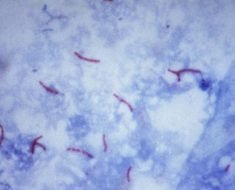
Histoplasmosis is an infection caused by a fungus or mold that often affects the lungs. In the U.S., it is most common in the Ohio and Mississippi river valley areas.
“This is a fungus that lives in the environment and is found in higher concentrations in areas where you have a lot of bird or bat droppings mixed into soil,” says Dr. Nipunie Rajapakse, a pediatric infectious diseases specialist at Mayo Clinic. “A person might get infected with it by breathing in these droppings when the soil gets disturbed or blown around in the wind.”
Anyone working with soil, such as farmers and landscapers, are at a higher risk of contracting histoplasmosis.
“We also see cases associated with renovation,” says Rajapakse. “If you’re demolishing old buildings, that can disturb enough of these type of spores, and then you’re at risk of inhaling them and getting infected.”
“Most people with a healthy immune system will be able to fight off the infection on their own,” says Rajapakse. “However, if you have a weakened immune system or if you’re exposed to a lot of the histoplasmosis spores, there are a number of symptoms that a person can present with, including fever and cough.”
For those who develop symptoms, they usually appear three to 17 days after exposure and may include fever, chest pain, fatigue, chills, dry cough or body aches.
Complications from histoplasmosis are more likely to develop in infants, the elderly or those with weakened immune systems. Complications can include spread of the infection from the lungs to other parts of the body.
“It can infect the lymph nodes that live in the center of the chest, and if those lymph nodes become enlarged, they can compress some of the structures that are in there,” explains Rajapakse. “For example, the esophagus or the tube that food goes down when you swallow can become compressed and people can complain of pain or feeling like things are getting stuck when they swallow. The lymph nodes can also compress the airways, and that can cause symptoms like cough or shortness of breath.”
Histoplasmosis is a treatable infection, but its diagnosis and treatment can be complicated. Many people recover on their own without needing antifungal treatment.
“Milder types of infections can be treated for about six weeks, but some infections, especially in our patients with weakened immune systems, can be treated for up to a year. And some people may need to stay on antifungals even beyond that,” says Rajapakse.
Preventing exposure to the fungus can be difficult because it is present in the environment and soil.
“If you are taking part in high-risk activities, such as construction, renovation-type activities, cleaning out chicken coops or cages, caving or entering into caves, it’s important to wear appropriate respiratory protection, so that you protect yourself from inhaling the infectious spores.”
Source: Read Full Article





